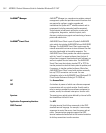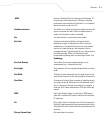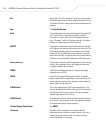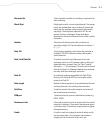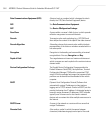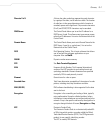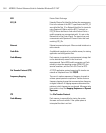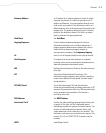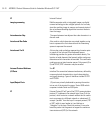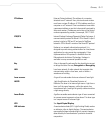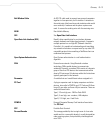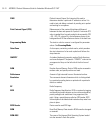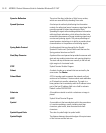
MC9000-G Product Reference Guide for Embedded Windows® CE .NET
GL-10
IP Internet Protocol.
imaging scanning Mobile computers with an integrated imager use digital
camera technology to take a digital picture of a bar code,
store the resulting image in memory and execute state-of-
the-art software decoding algorithms to extract the data
from the image.
Intercharacter Gap The space between two adjacent bar code characters in a
discrete code.
Interleaved Bar Code A bar code in which characters are paired together, using
bars to represent the first character and the intervening
spaces to represent the second.
Interleaved 2 of 5 A binary bar code symbology representing character pairs
in groups of five bars and five interleaved spaces.
Interleaving provides for greater information density. The
location of wide elements (bar/spaces) within each group
determines which characters are encoded. This continuous
code type uses no intercharacter spaces. Only numeric (0 to
9) and START/STOP characters may be encoded.
Internet Protocol Address See IP.
I/O Ports interface The connection between two devices, defined by
common physical characteristics, signal characteristics,
and signal meanings. Types of interfaces include RS-232
and PCMCIA.
Input/Output Ports I/O ports are primarily dedicated to passing information
into or out of the terminal’s memory. Series 9000 mobile
computers include Serial and USB ports.
IP (Internet Protocol) The IP part of the TCP/IP communications
protocol. IP implements the network layer (layer 3) of the
protocol, which contains a network address and is used to
route a message to a different network or subnetwork. IP
accepts “packets” from the layer 4 transport protocol (TCP
or UDP), adds its own header to it and delivers a
“datagram” to the layer 2 data link protocol. It may also
break the packet into fragments to support the maximum
transmission unit (MTU) of the network.



